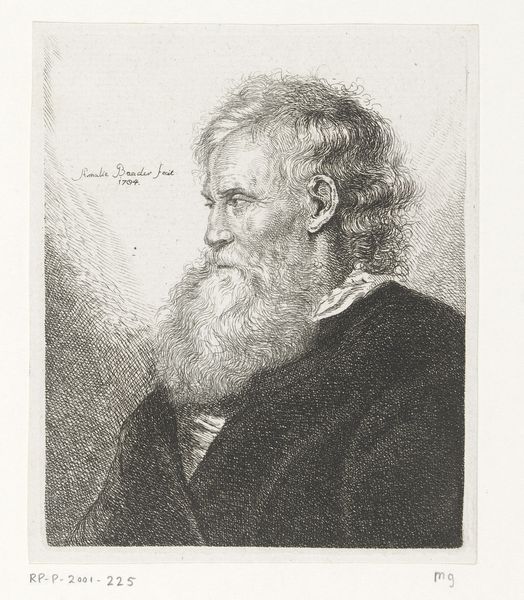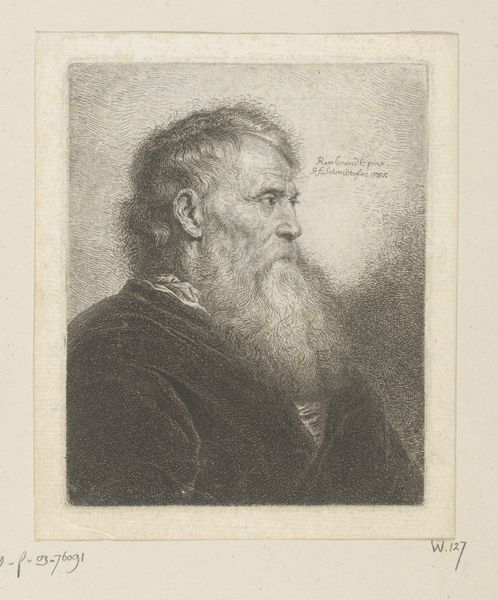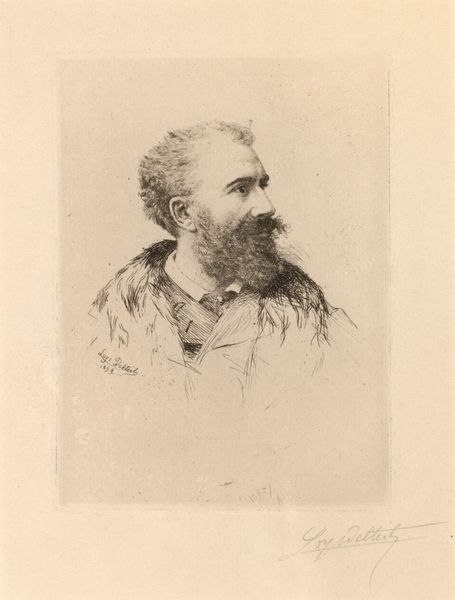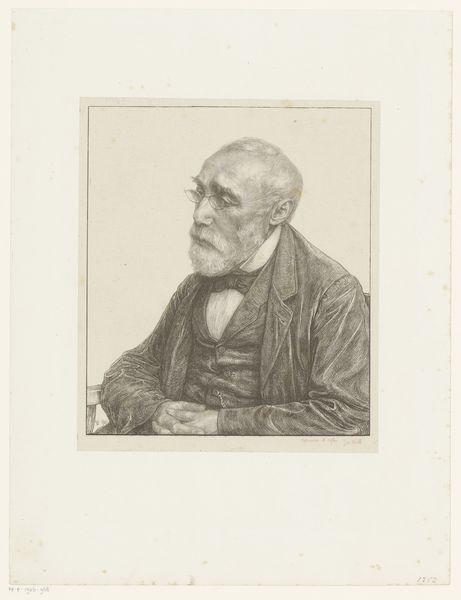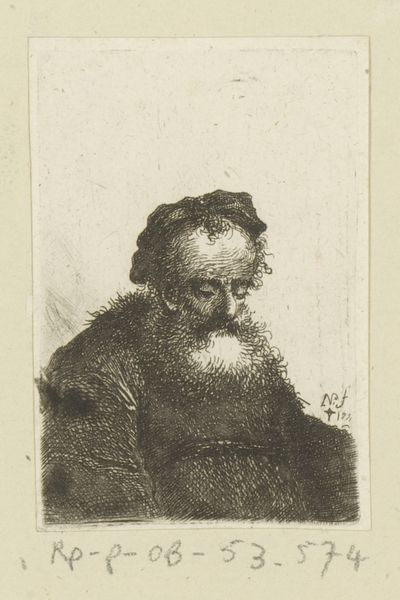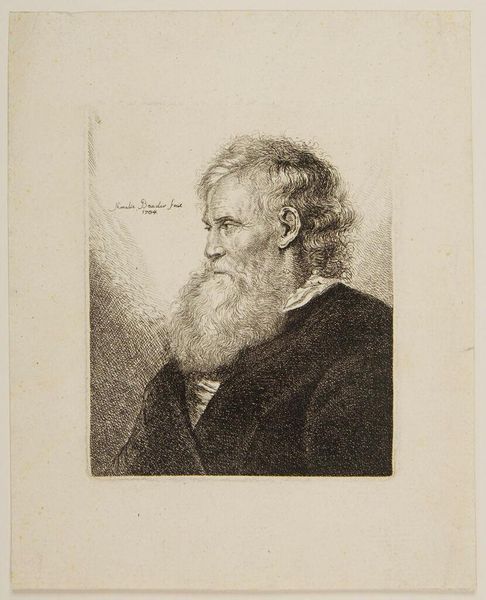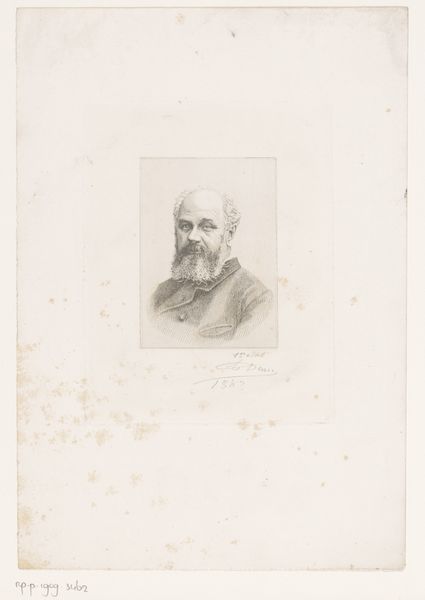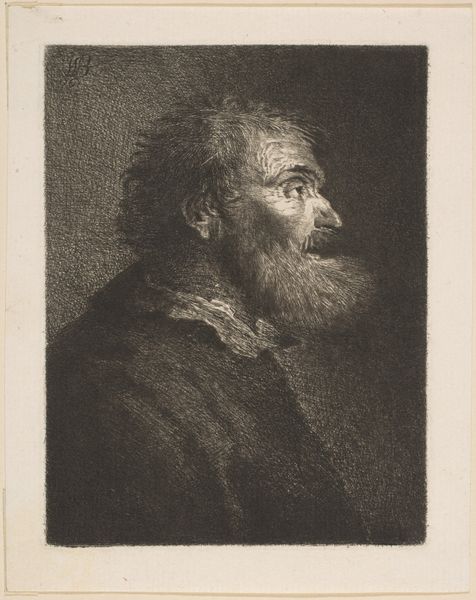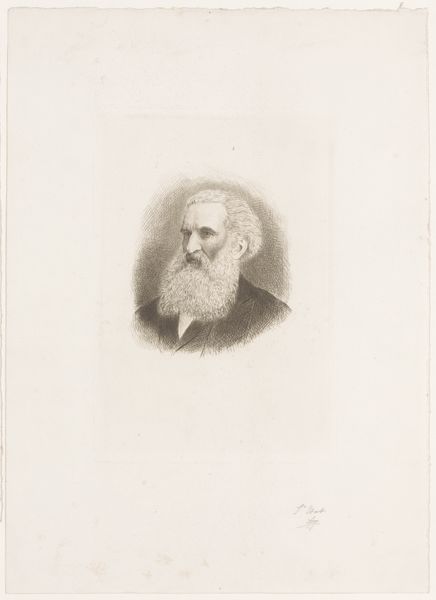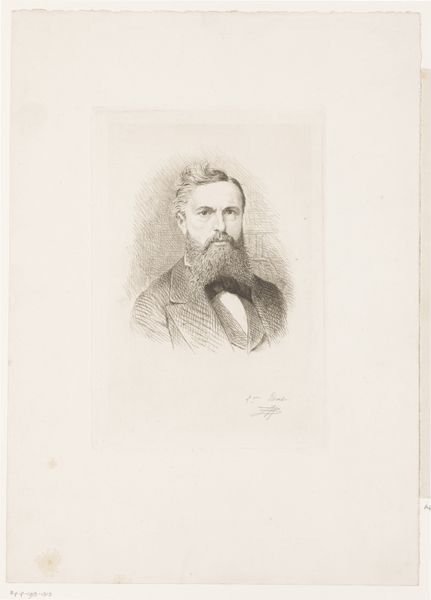
Dimensions: height 63 mm, width 44 mm
Copyright: Rijks Museum: Open Domain
Editor: We're looking at Johann Andreas Benjamin Nothnagel's "Oude man met baard," an engraving from 1771. I'm struck by the delicate lines used to create texture, especially in the beard and hair. What draws your eye as you analyze the formal aspects of this portrait? Curator: Immediately, I'm drawn to the contrast achieved within a monochromatic palette. Notice how Nothnagel uses hatching and cross-hatching to define form and volume. The subtle shifts in tone, created solely through line density, give a palpable weight to the figure. Do you perceive a specific focal point emerging from this technique? Editor: I see that the lines around the face are darker, creating a stronger sense of definition. The light catches his brow and the bridge of his nose, almost making the man glow from within. Curator: Precisely. This controlled distribution of light and shadow is paramount. The engraver's masterful manipulation of the medium’s inherent qualities—line and tone—elicits a sense of depth despite the relative simplicity of the composition. Consider the expressive qualities inherent in the varying thicknesses and directions of the lines. Editor: I hadn't thought about it that way before. It's not just a picture; it's the technical skill that creates the image. Thanks for pointing that out. Curator: My pleasure. A formalist lens allows us to appreciate the artist's technique independently from, though not divorced from, subject matter or historical context, enabling deeper insight into the art-making process itself.
Comments
No comments
Be the first to comment and join the conversation on the ultimate creative platform.
